So now it's time to try to catch up a bit here.
Let me say right off that this is a very photo intensive entry, so it may take a while to load. As always, you can click on any picture for a larger version
We left Alamogordo last May and headed up to Manzano Mountains State Park. Our original plan had been to go over to Datil Wells to see the Very Large Array, but a kind ranger at Oliver Lee told us about the Salinas Pueblos and assured us it was something we needed to see.
This is just another aspect of what we love about this lifestyle, the freedom to change our minds and go where the wind blows, so it was off to Manzano we went.
And what a revelation these pueblos have proved to be, I don't know where to begin. We had never heard of the Salinas Pueblos, but, let me tell you, this area has opened up new vistas for both of us and proved educational in ways which we both appreciate.
The Salinas Pueblos are three ancient pueblos/villages, situated in the Estancia Basin. Native Americans have lived here since around 700 AD (and probably earlier) and there are ruins all over the area, but the "official" Salinas Pueblos are Gran Quivera, Quarai and Abo. Each is an individual city, but all are located within approximately thirty miles of each other.
During our time in Manzano, we visited the pueblos various times and these pictures are representative of the summer of 2007.
The Tour Begins
Gran Quivera
Gran Quivera
This shot is an overview of Gran Quivera, taken from the bottom of the hill.
This day was really magical with the clouds and the sun,
I LOVE the light in New Mexico.
This day was really magical with the clouds and the sun,
I LOVE the light in New Mexico.
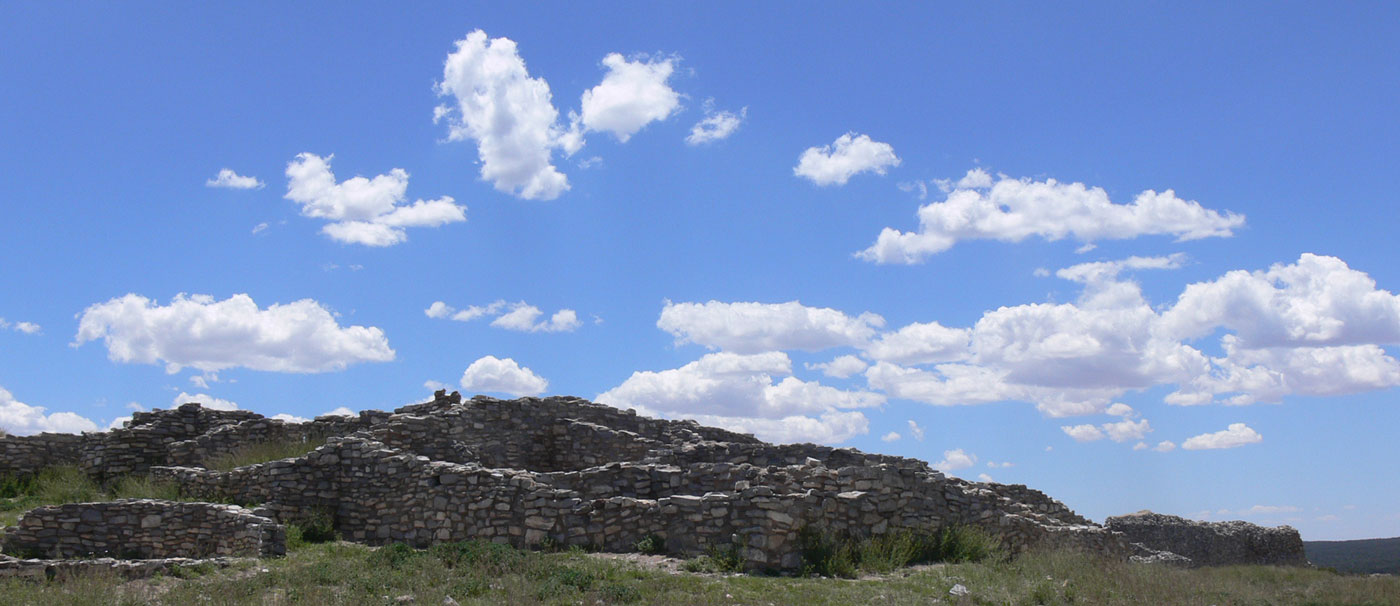
There are numerous kivas scattered throughout Gran Quivera. Interesting that for a number of years the native religions flourished right along side of the Catholic Church. When the church decided to try to ban the native religions, the result was the Pueblo Revolt of 1680, which resulted in the Spaniards being ejected from this are for approximately twelve years.
I was really taken with the lavender flowers growing in the bottom of this kiva.
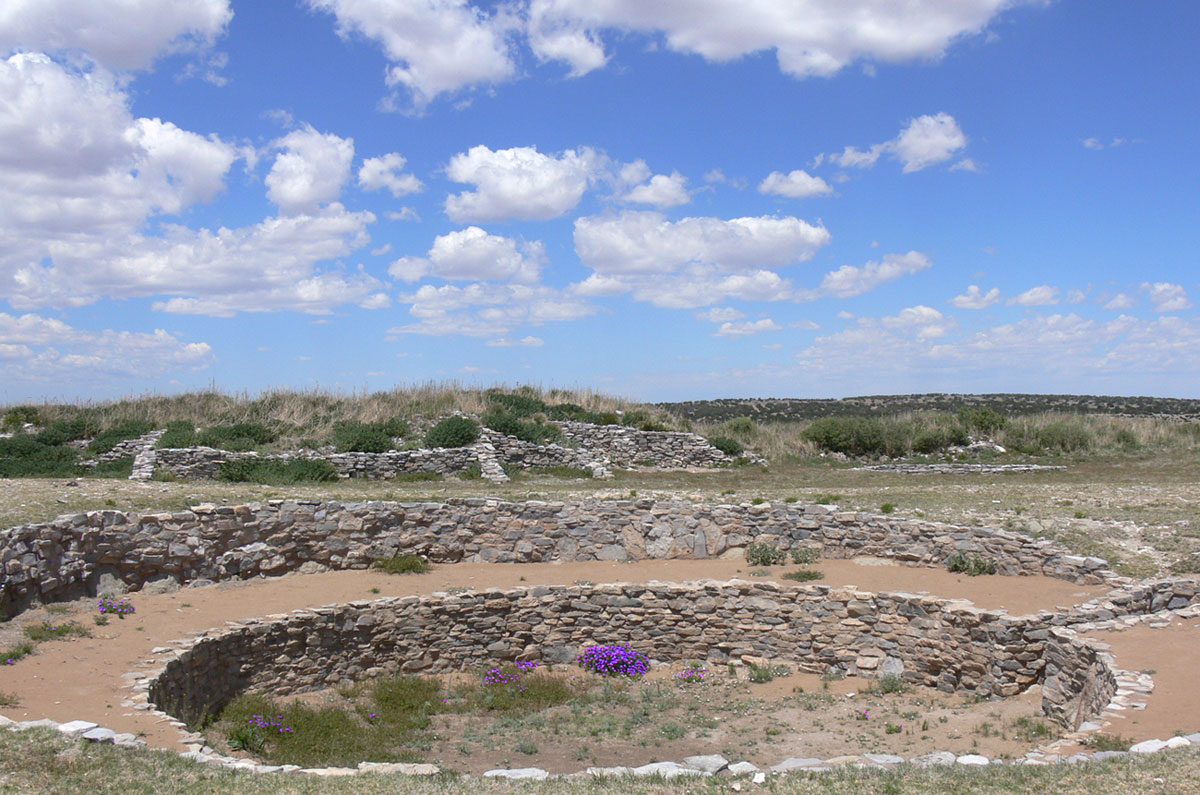
This shot shows two kivas and an excavated room. Only about 10% of the Pueblo has been excavated. There are many questions as to the actual purpose of a lot of these rooms
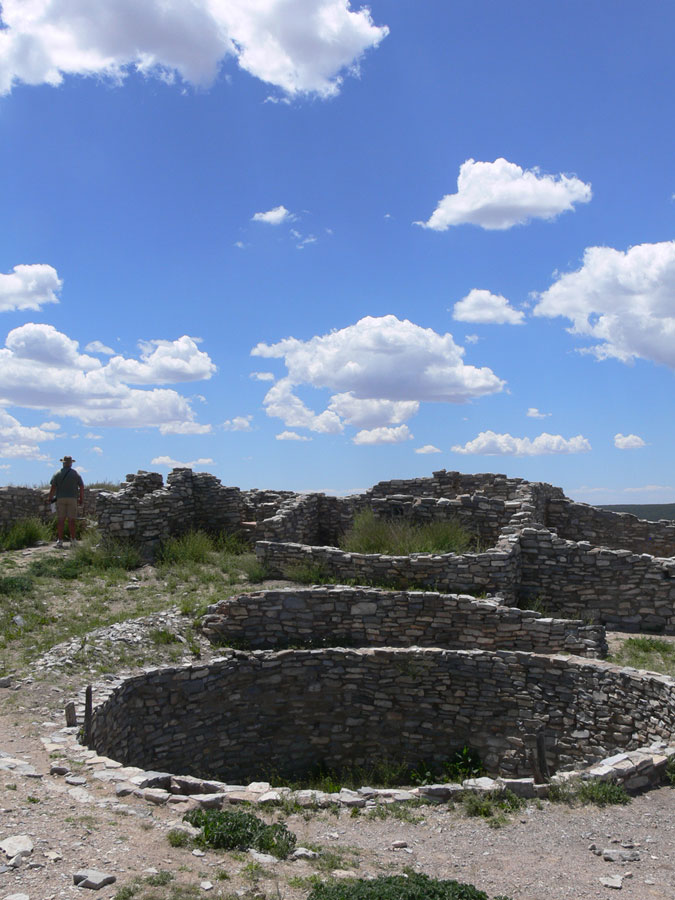
Most of the rooms measure around six to eight feet square, certainly small compared to modern homes, but not too terrible to those of us who spend a lot of times in motorhomes!

Gran Quivera is the largest of the three pueblos in the Estancia Basin.
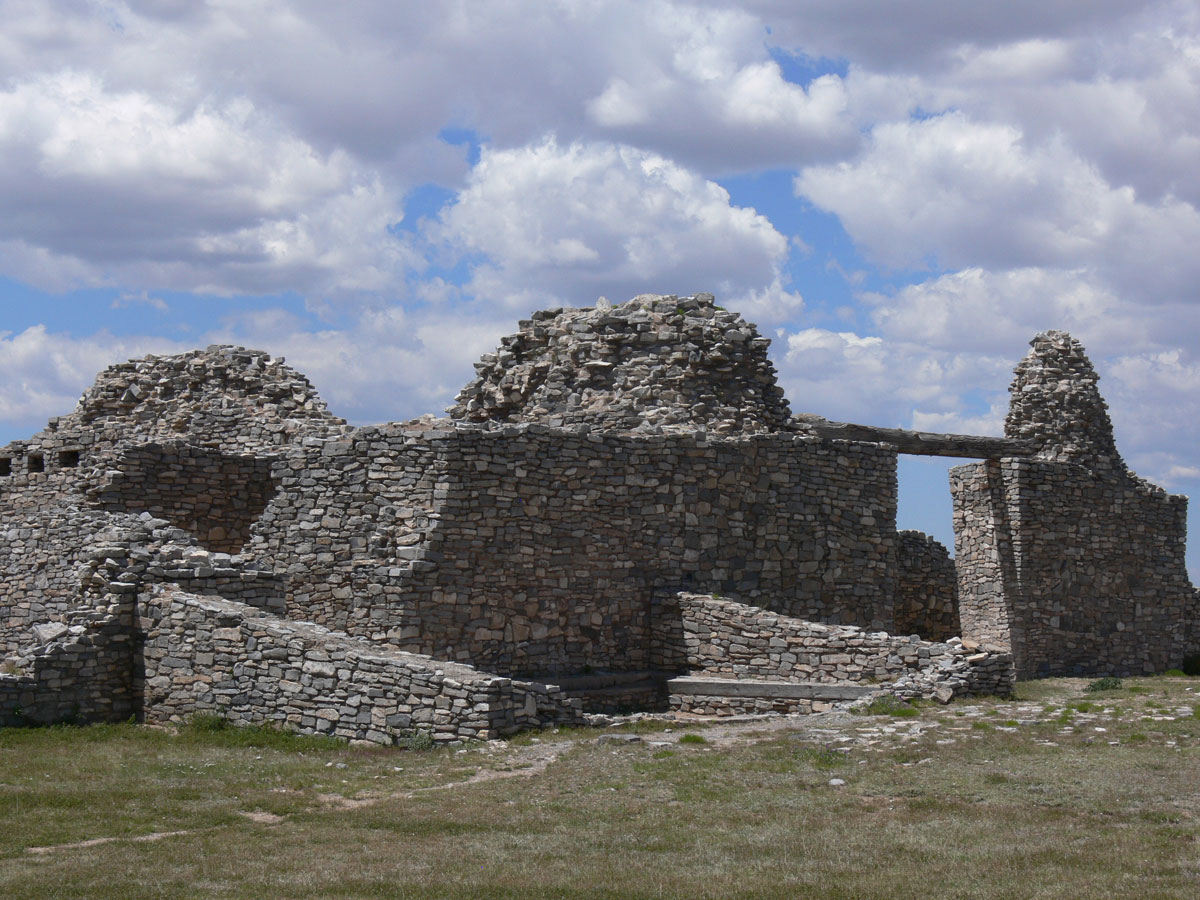
A wider shot of the outbuilding shown above.
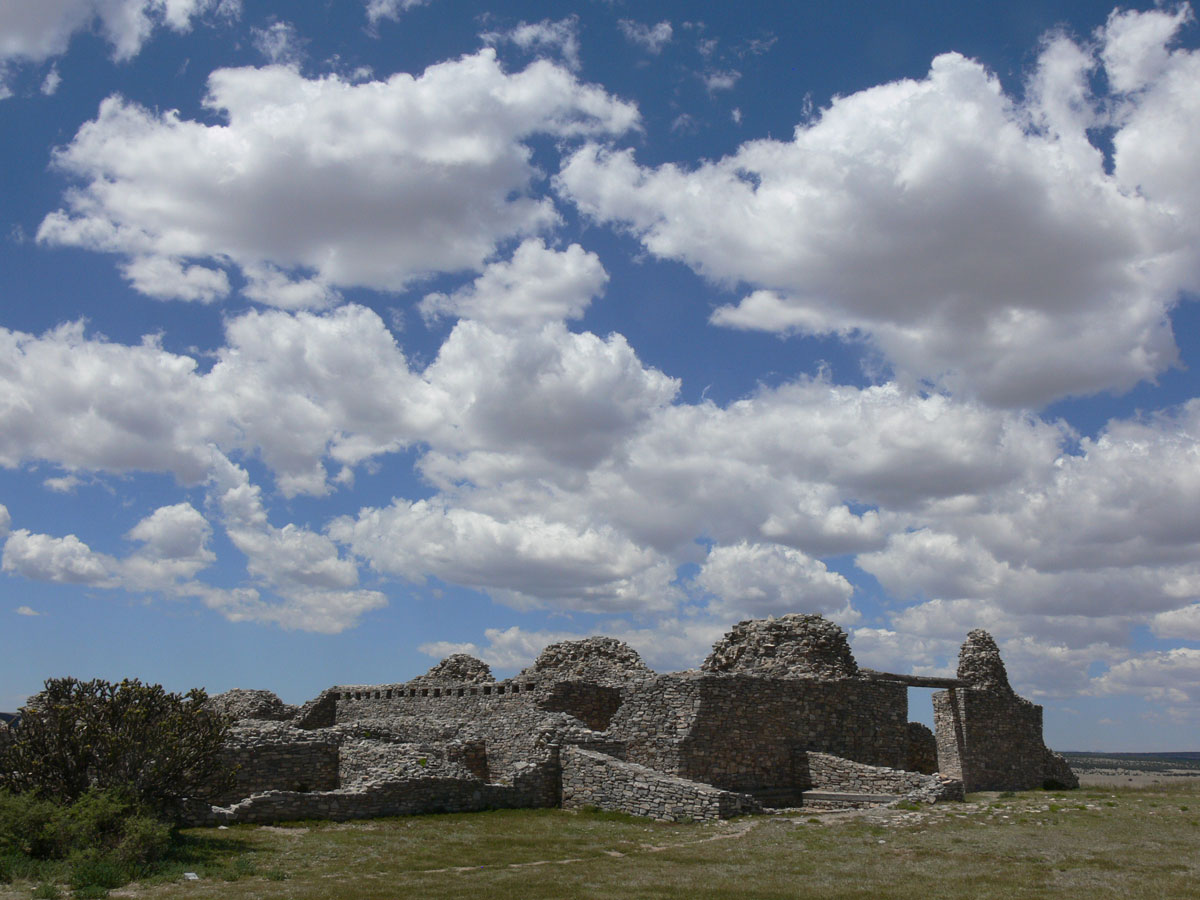
This area is the remains of the Catholic Church that was
built by the Native Americans under the supervision of the Catholic Church.
built by the Native Americans under the supervision of the Catholic Church.
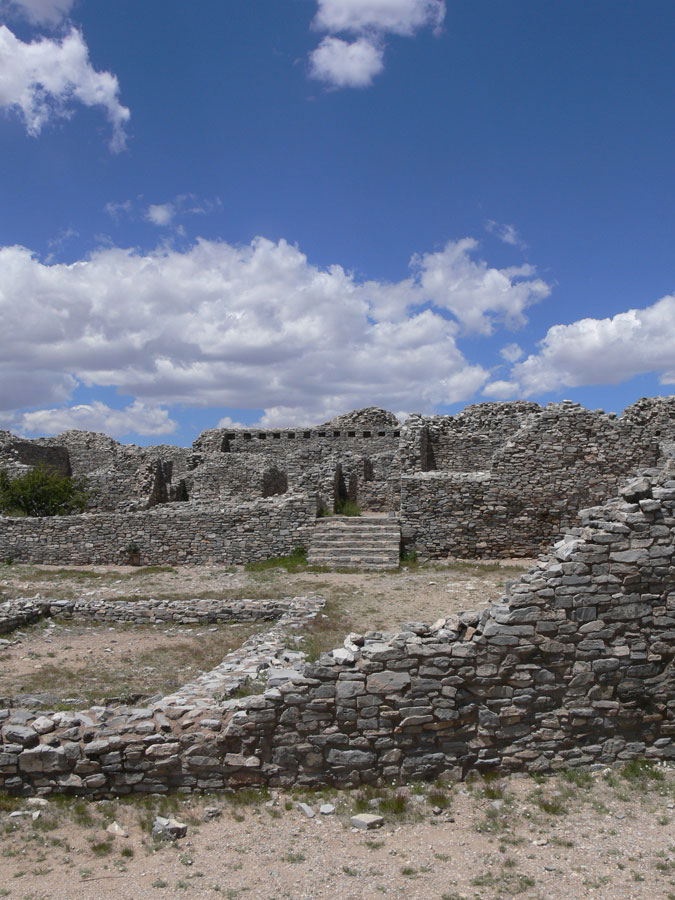
I just couldn't get enough of the designs created by these walls.
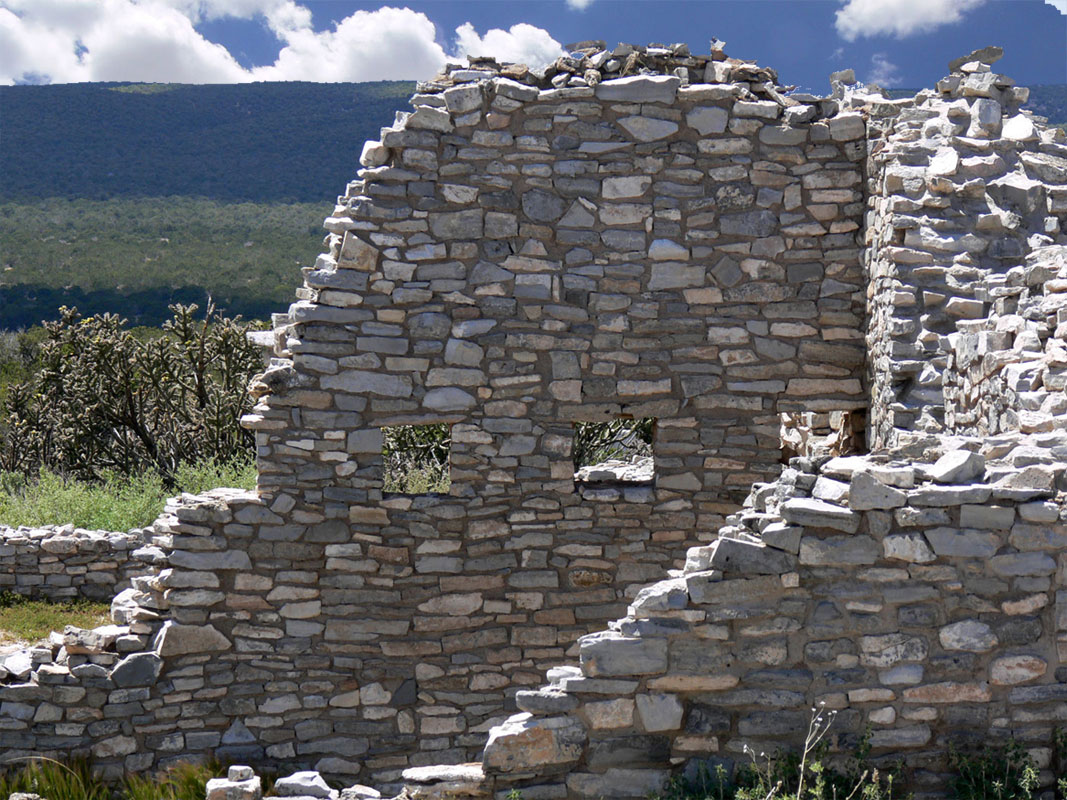
More walls.
Have I mentioned that we were the only ones visiting Gran Quivera that day?
It certainly added to the magic that we had the place to ourselves.
Have I mentioned that we were the only ones visiting Gran Quivera that day?
It certainly added to the magic that we had the place to ourselves.
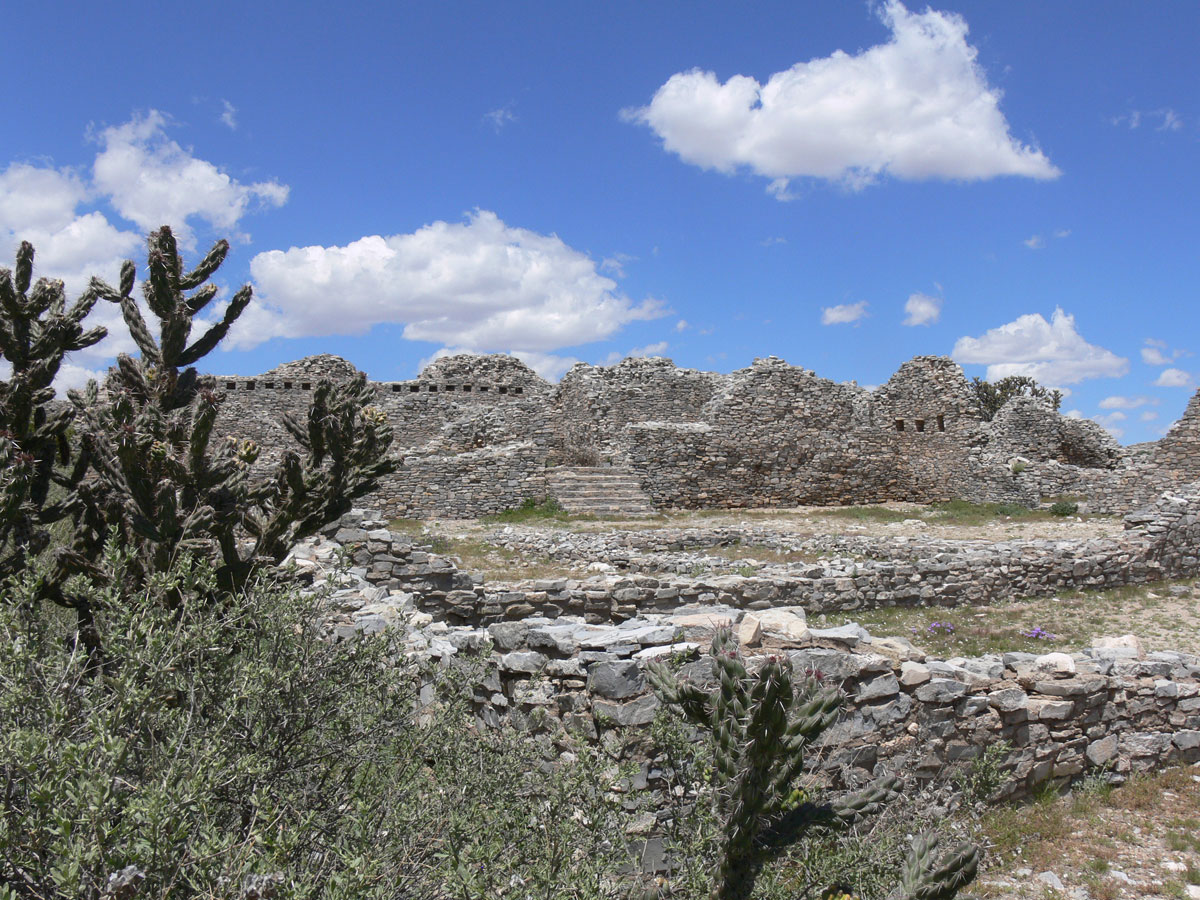
Another shot I'm including just because I like it.
The cholla were in bloom all over the plains.
The cholla were in bloom all over the plains.
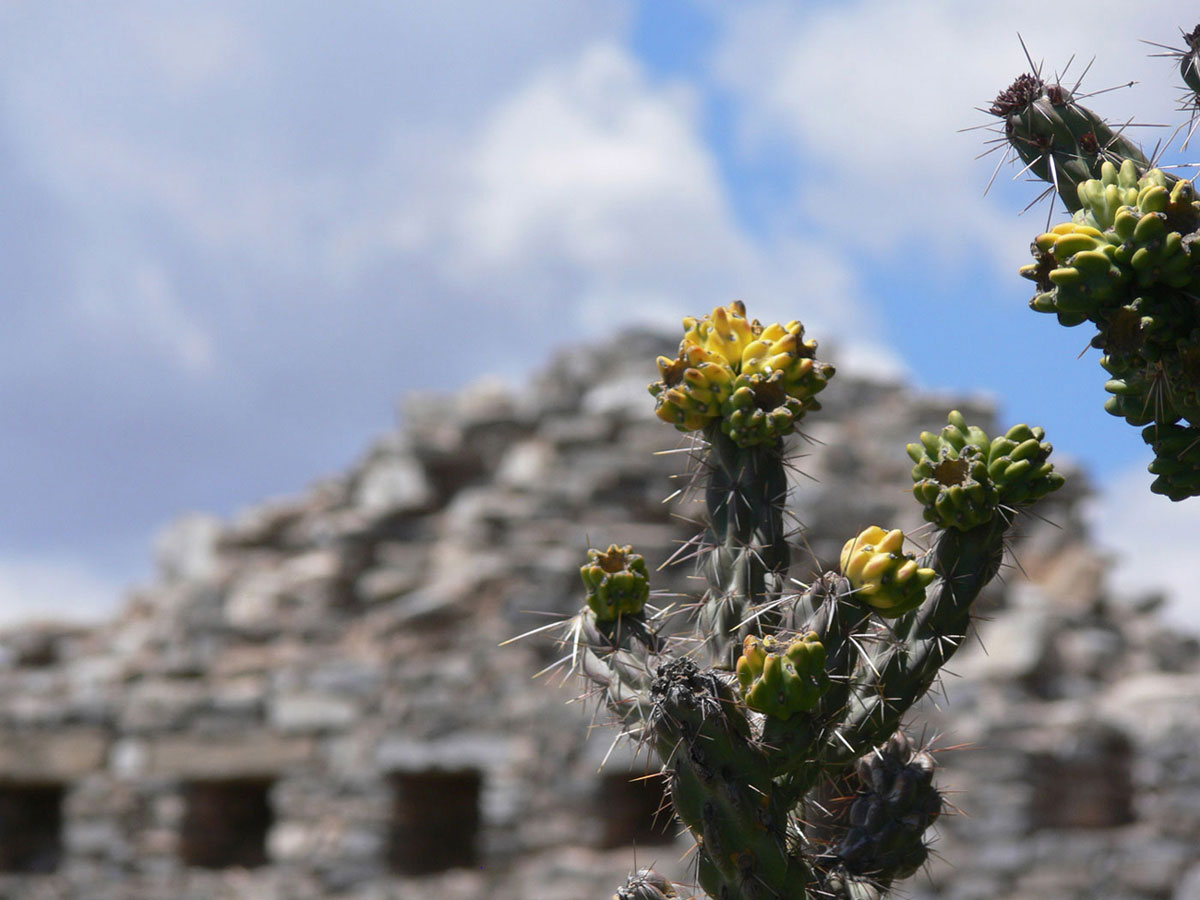
The holes in the walls held the timbers that once supported the roof.
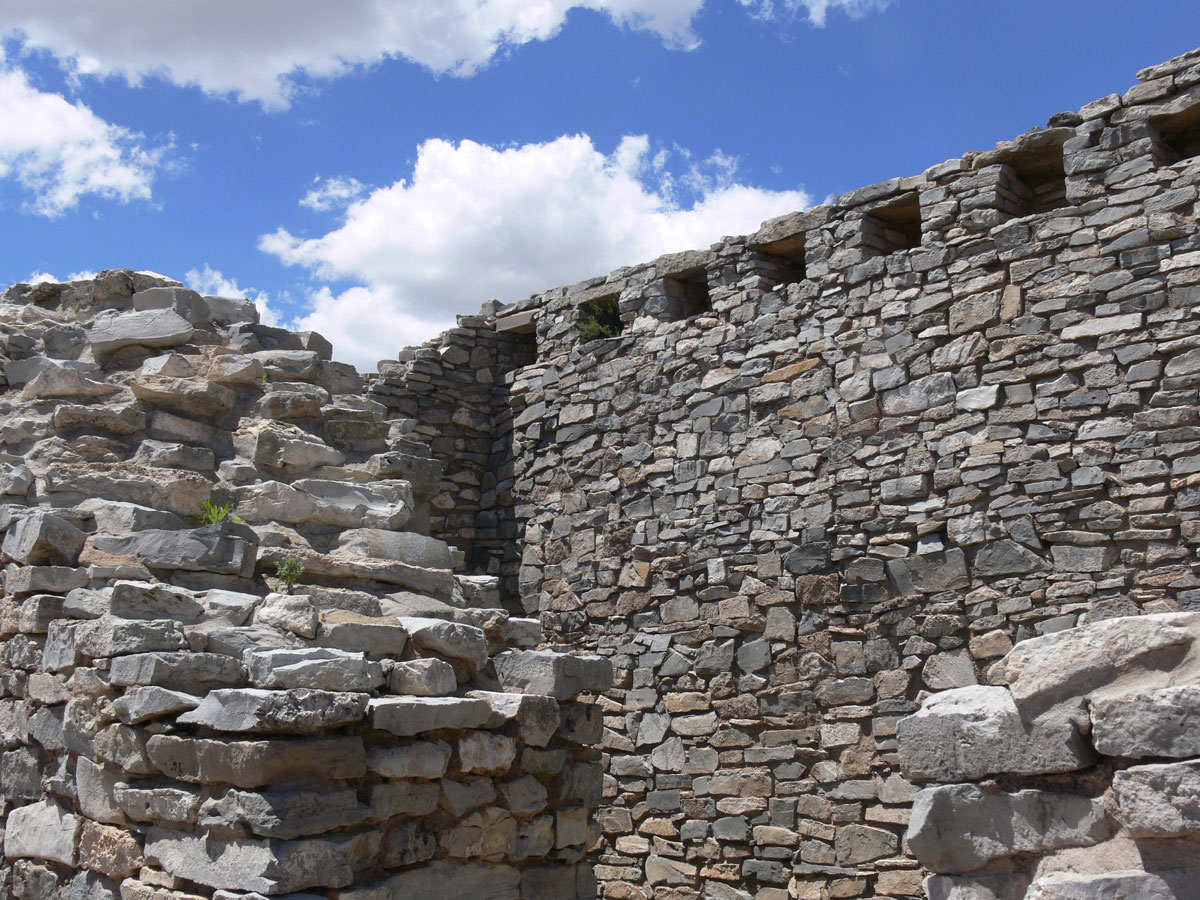
I liked the contrast of this tower against the clouds.
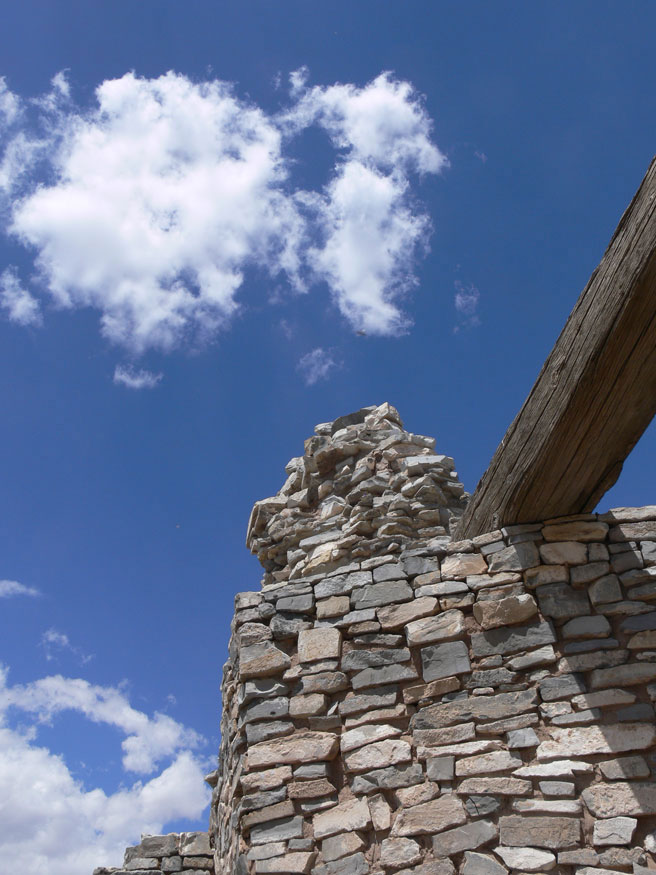
A shot from inside the chapel looking out over the plains.
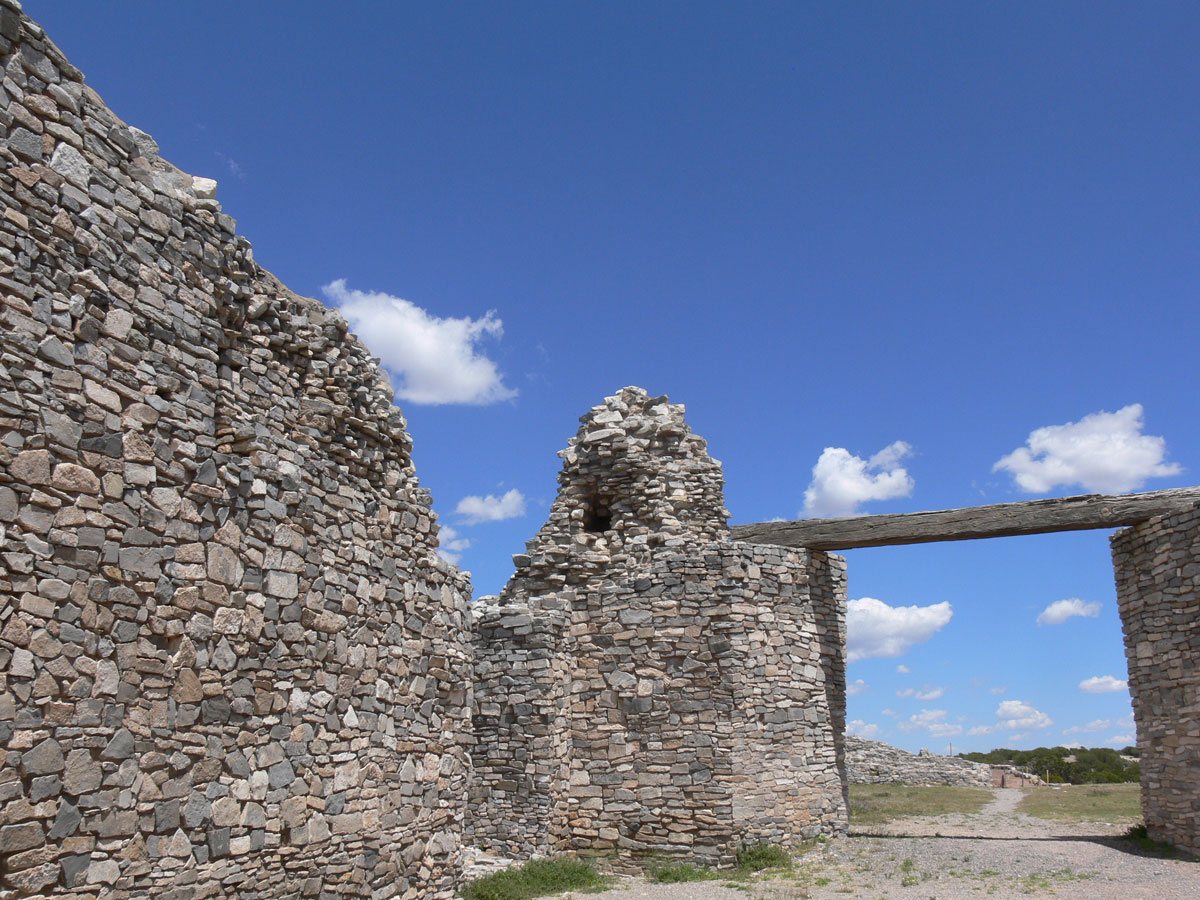
The Pueblos were built on top of older ruins,
which can be seen in this excavated room.
which can be seen in this excavated room.
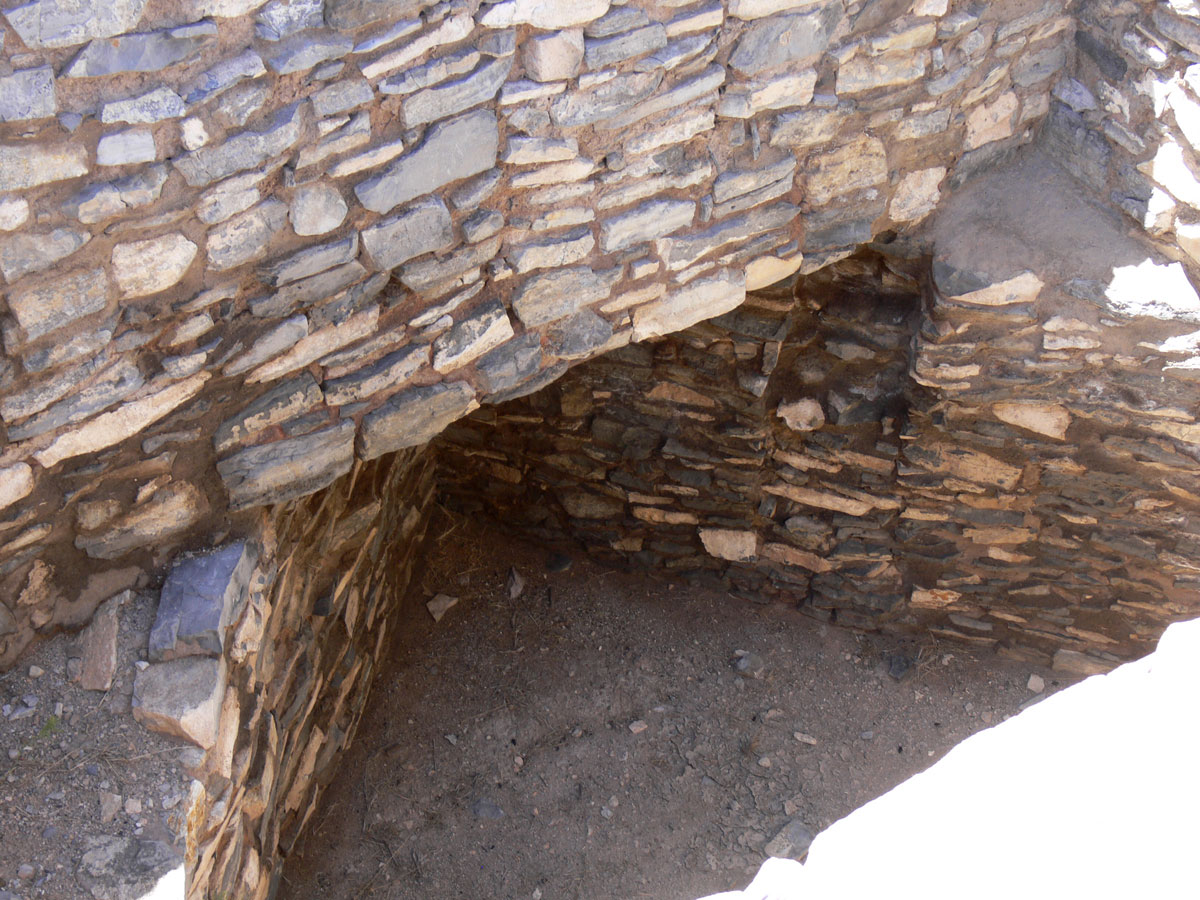
They would build the new rooms at an angle
over the existing walls for structural integrity.
It isn't known how far down these ruins actually extend.
over the existing walls for structural integrity.
It isn't known how far down these ruins actually extend.
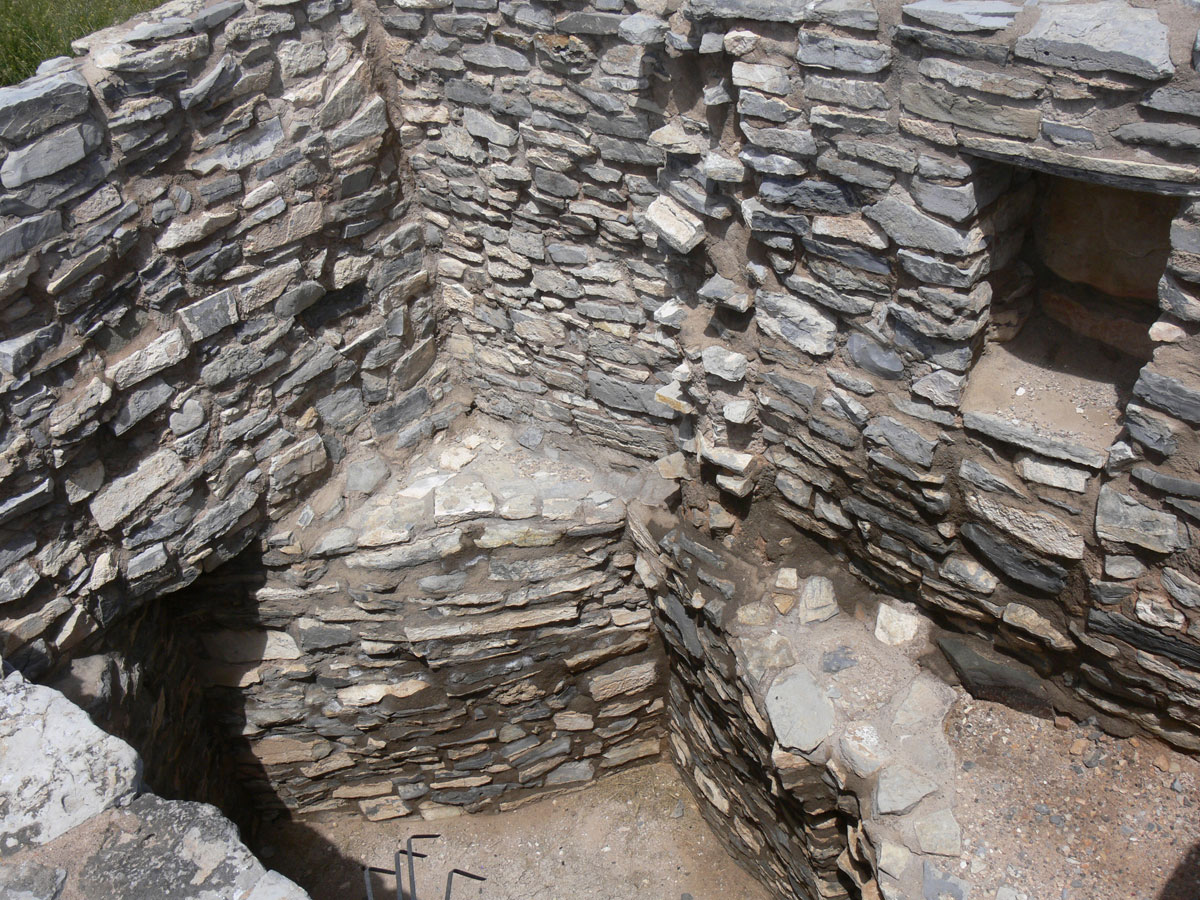
A shot taken from the top of the ruins looking over the plains.
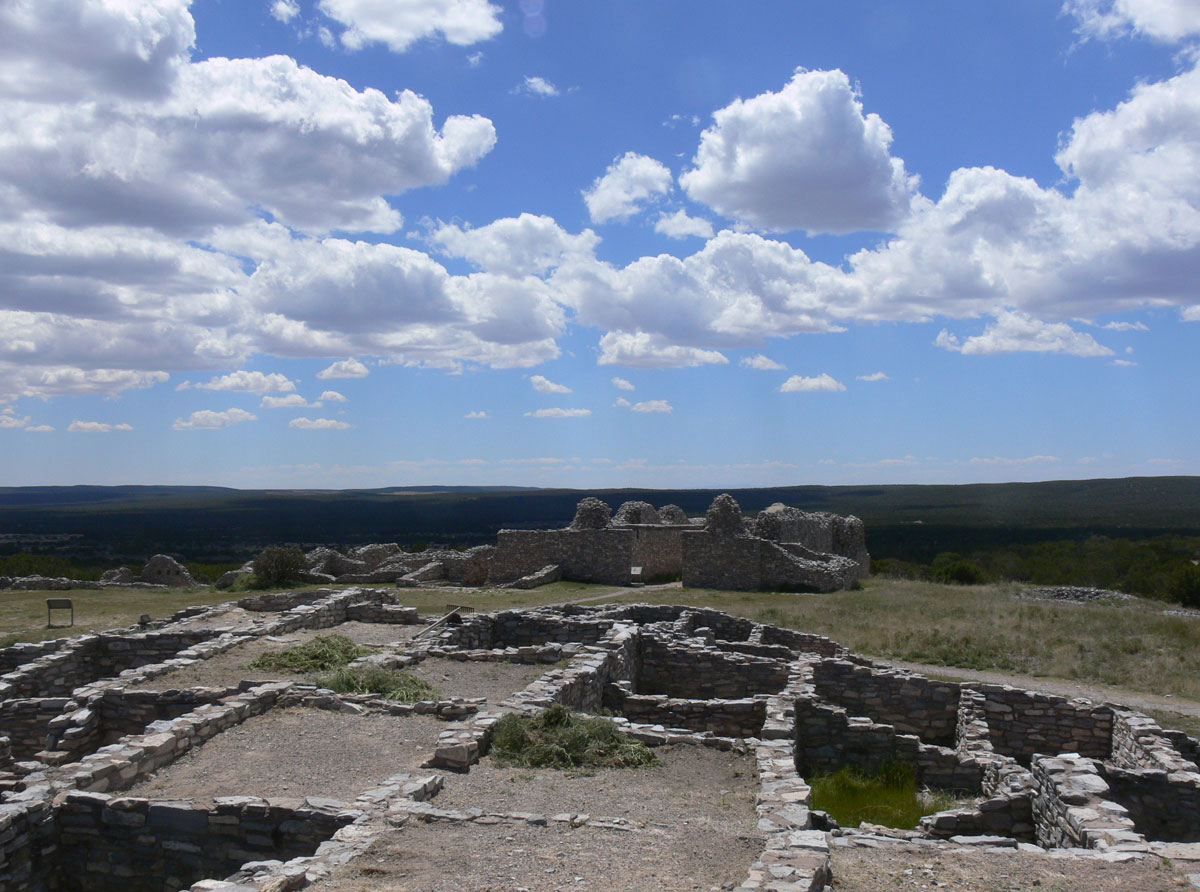
I took this shot as we were walking down from the ruins.
If you looks really close, you can see a Ranger up on the mound.
These folks do a wonderful job keeping the grounds clear.
This shot gives you some idea of how far the Pueblo at Gran Quivera extends.
If you looks really close, you can see a Ranger up on the mound.
These folks do a wonderful job keeping the grounds clear.
This shot gives you some idea of how far the Pueblo at Gran Quivera extends.
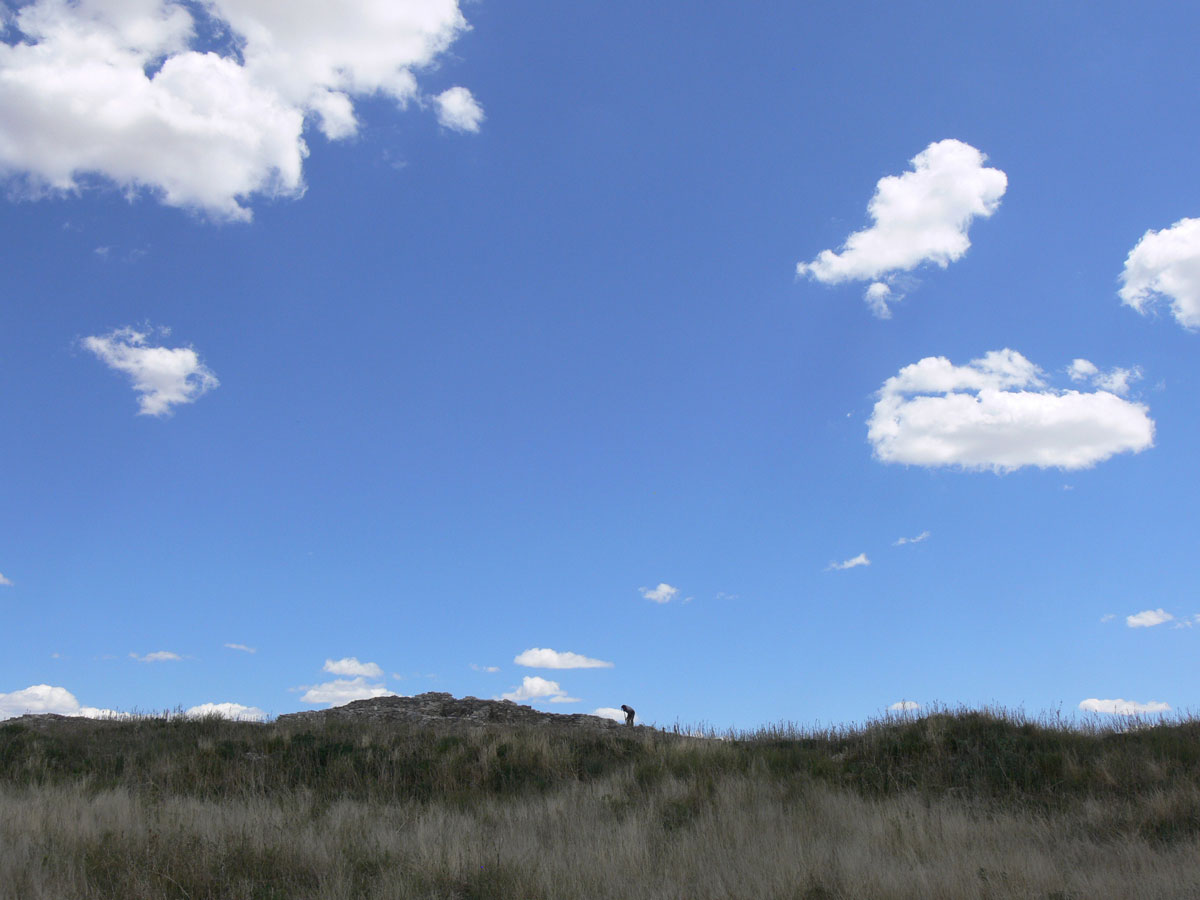
I took this last shot at the Visitor Center at Gran Quivera.
I really liked the way the clouds looked through the patio roof.
I really liked the way the clouds looked through the patio roof.

Now we're moving to Quarai.
This is my favorite of the three Pueblos.
It's also the closest to Manzano Mountains State Park,
where we were camp hosting this summer.
This is my favorite of the three Pueblos.
It's also the closest to Manzano Mountains State Park,
where we were camp hosting this summer.
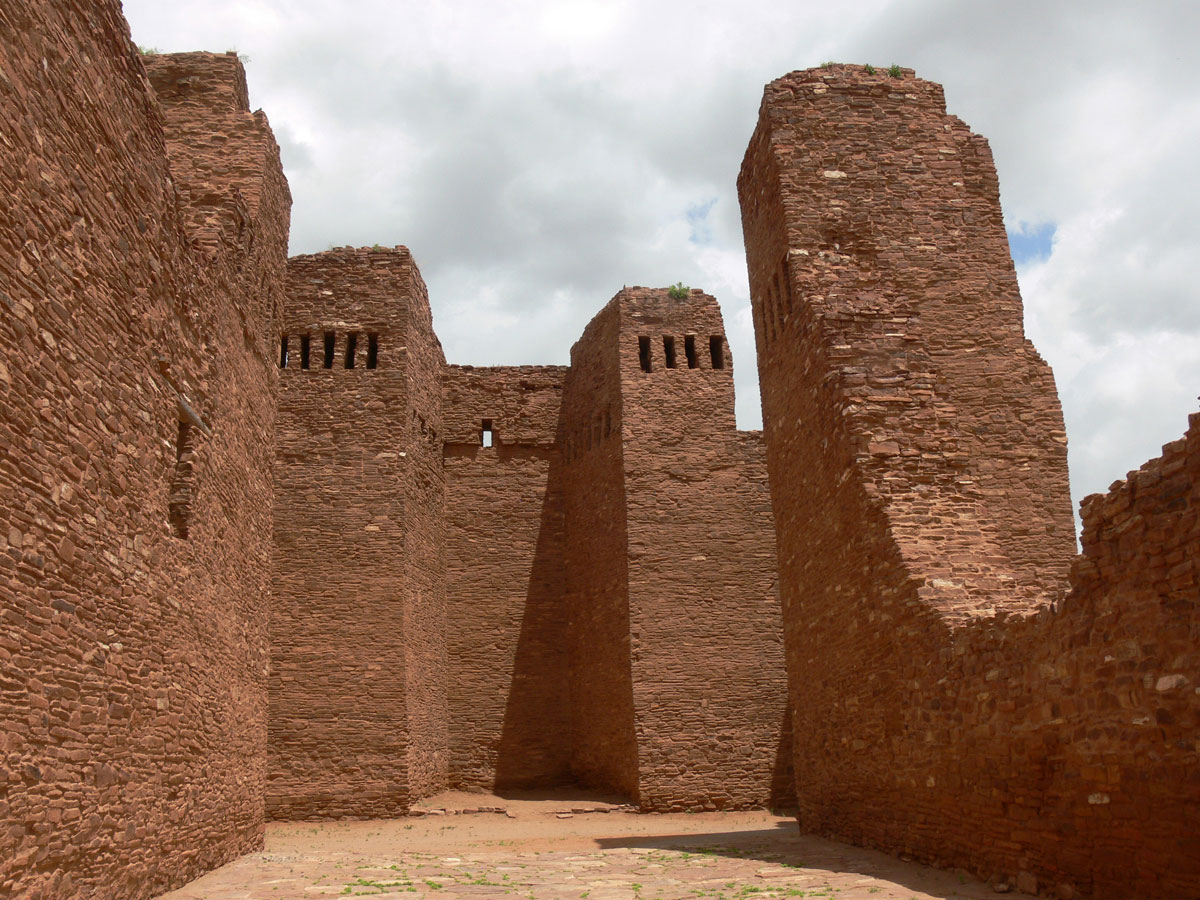 Another angle from inside the chapel.
Another angle from inside the chapel. The acoustics in here are so great that several times a year,
a capella groups perform at Quarai.
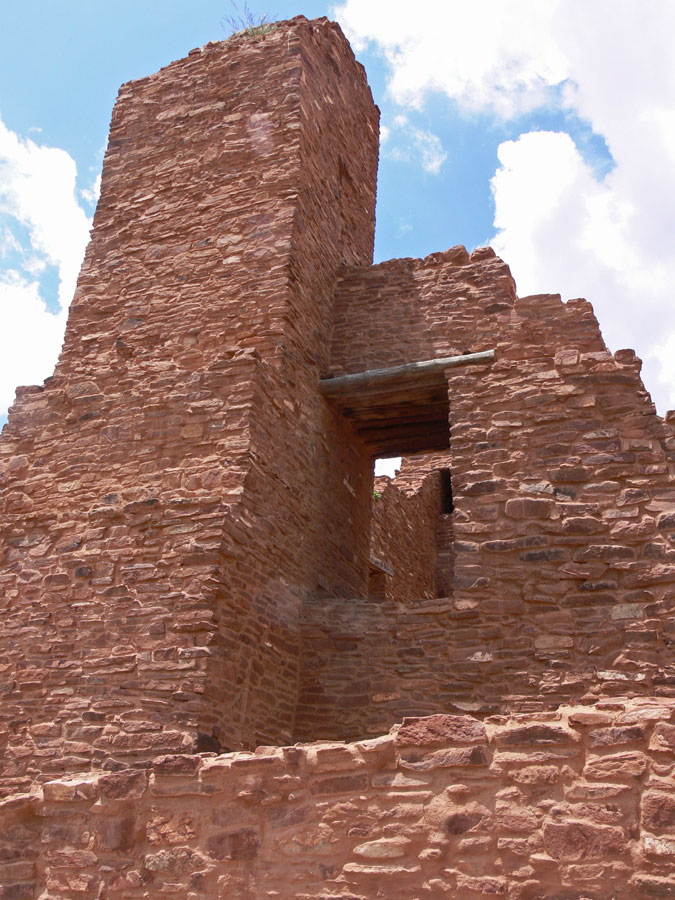 Another shot of the ruins.
Another shot of the ruins. This day was quite lovely, blue skies, 70 degrees and just the hint of a breeze.
Once again, we had the place all to ourselves.
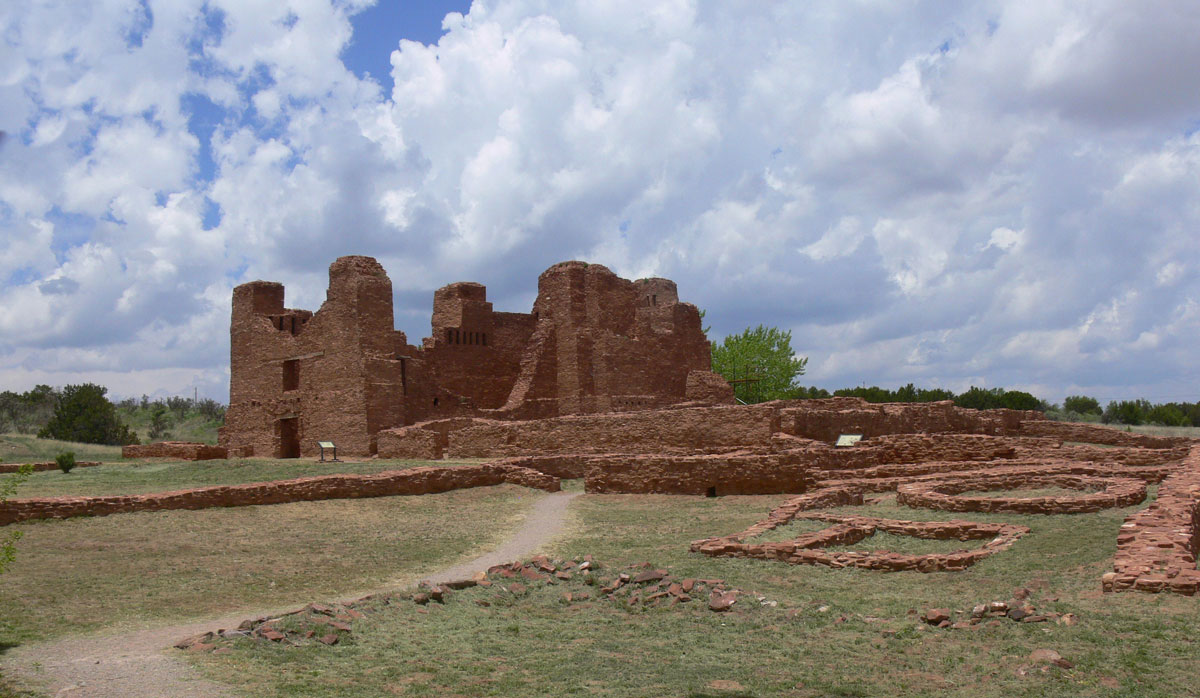 Quarai has the most water of all three Pueblos.
Quarai has the most water of all three Pueblos. Since the water here is more readily available,
this Pueblo still has remnants of the original orchards and fields.
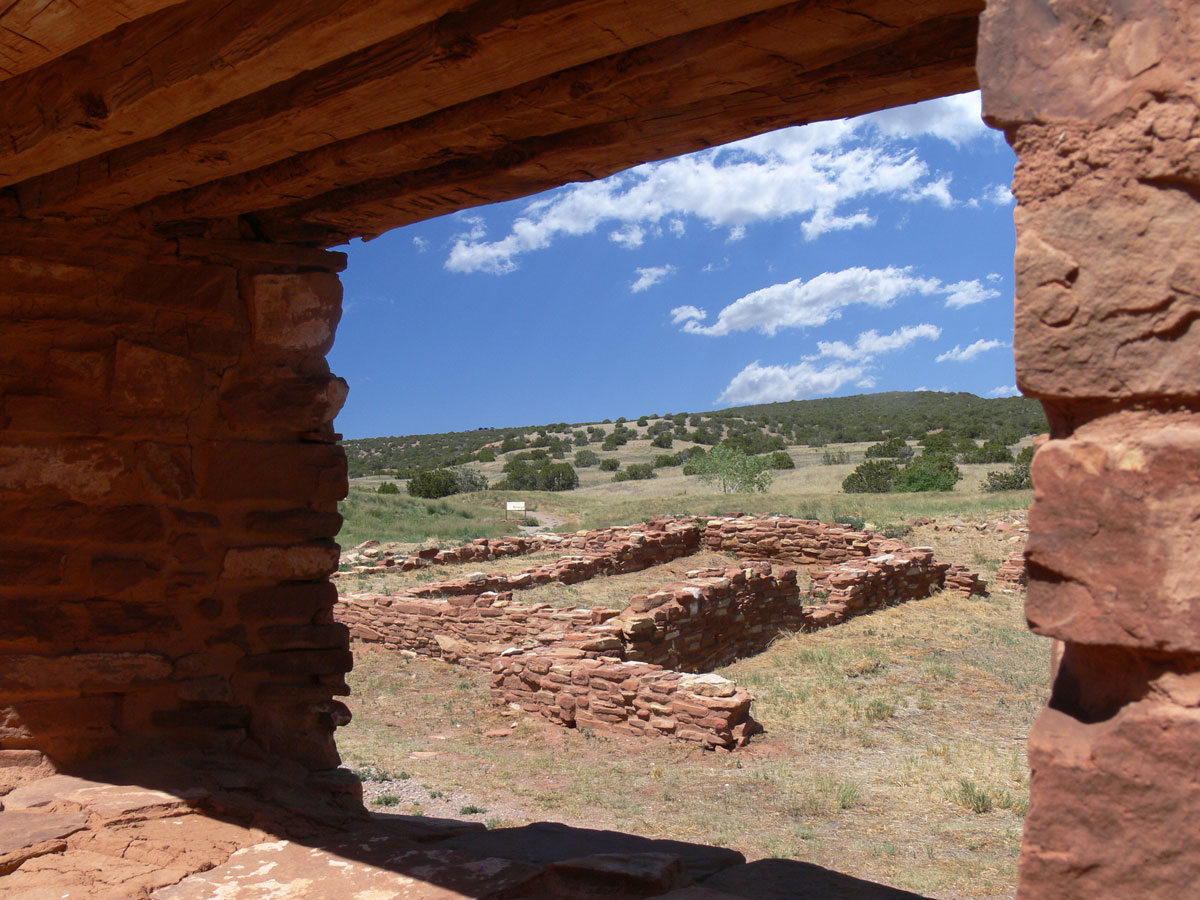
A final shot of Abo.
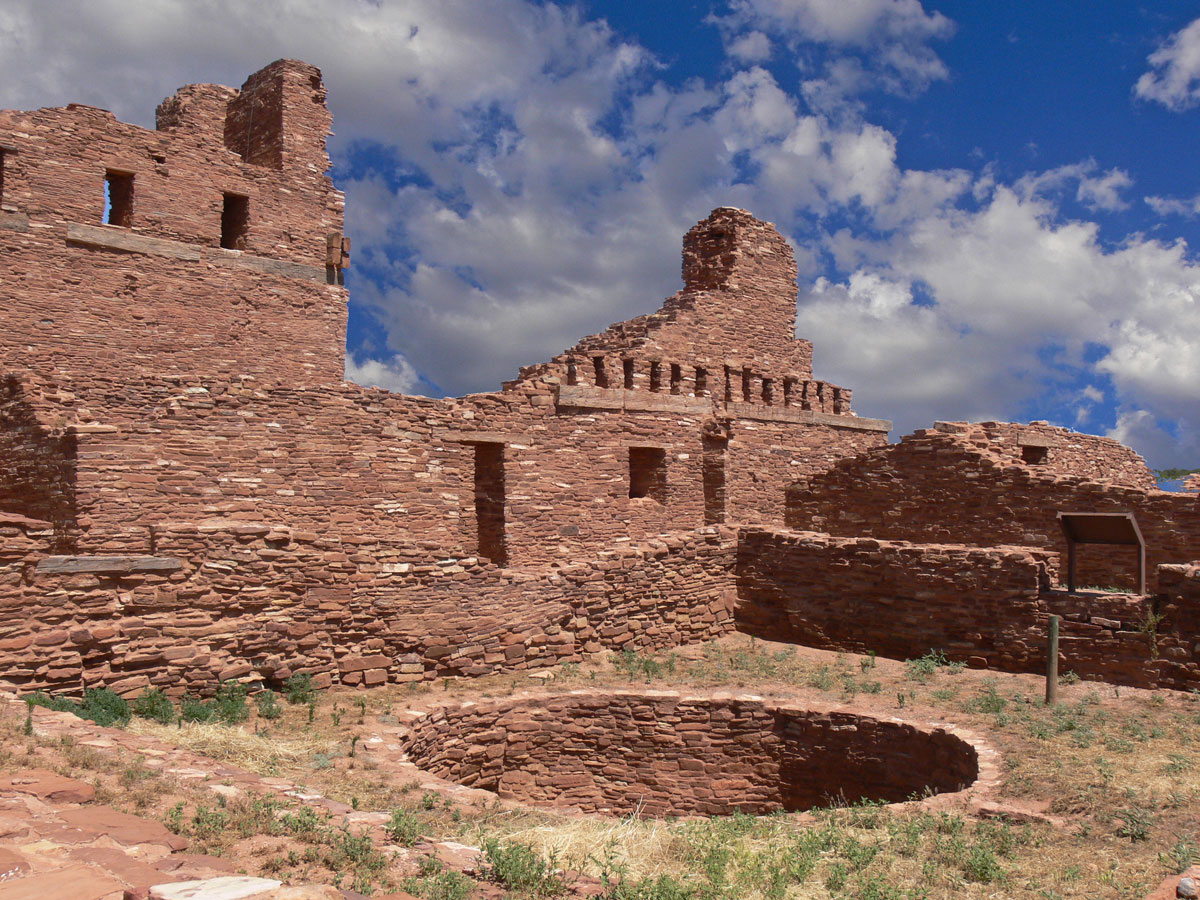
Aren't these Pueblos a wonder of our American history? They have been collectively designated as a National Monument and should get more visitors than they do.
If you're in the area, make sure not to miss these National Treasures.
Our Life is Good.
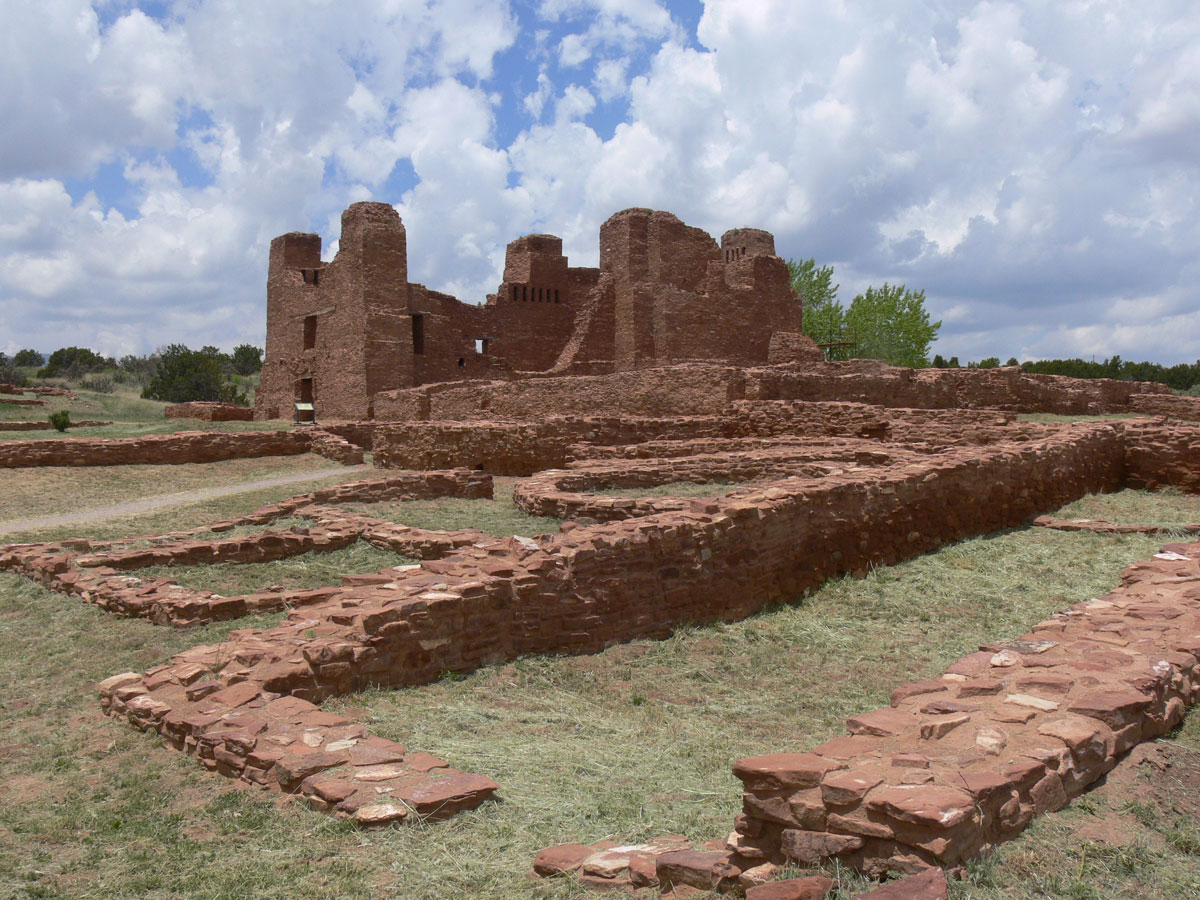
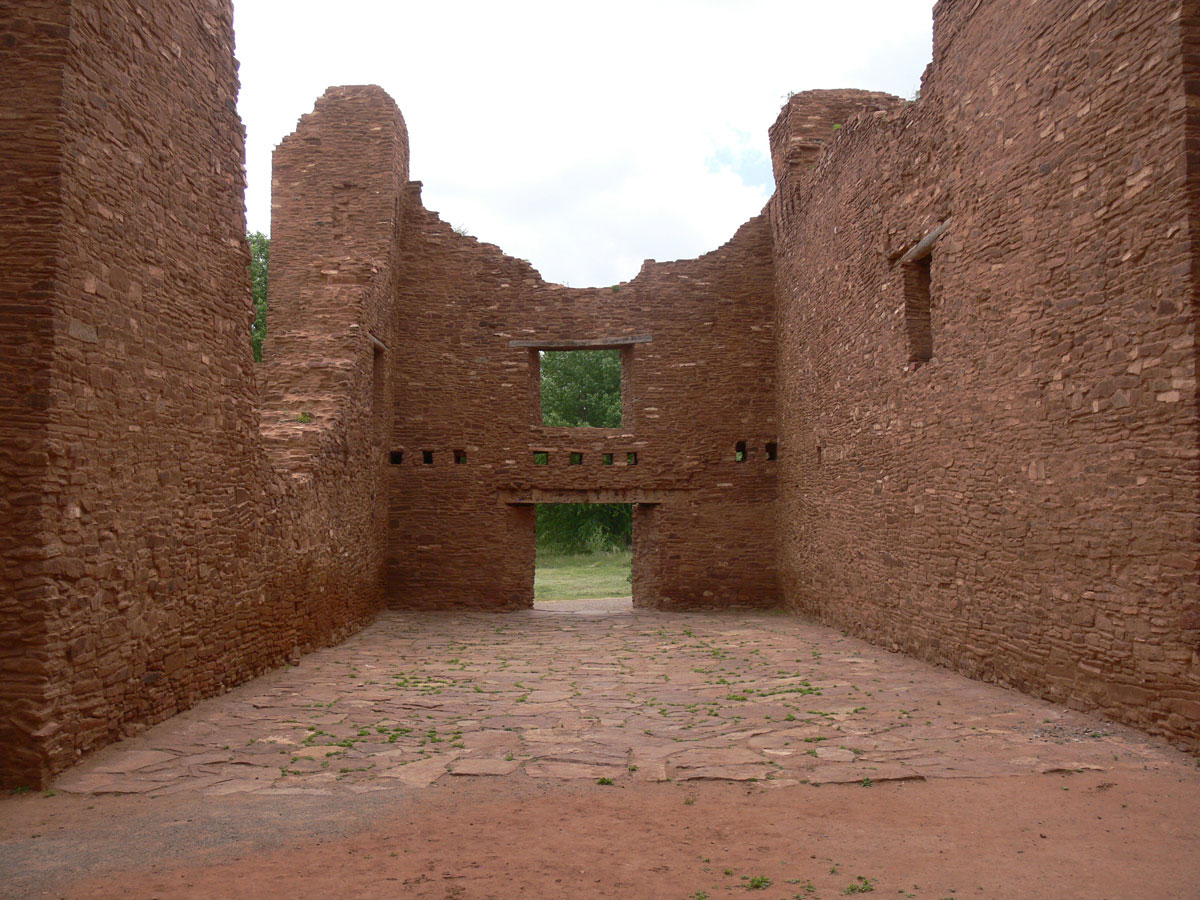
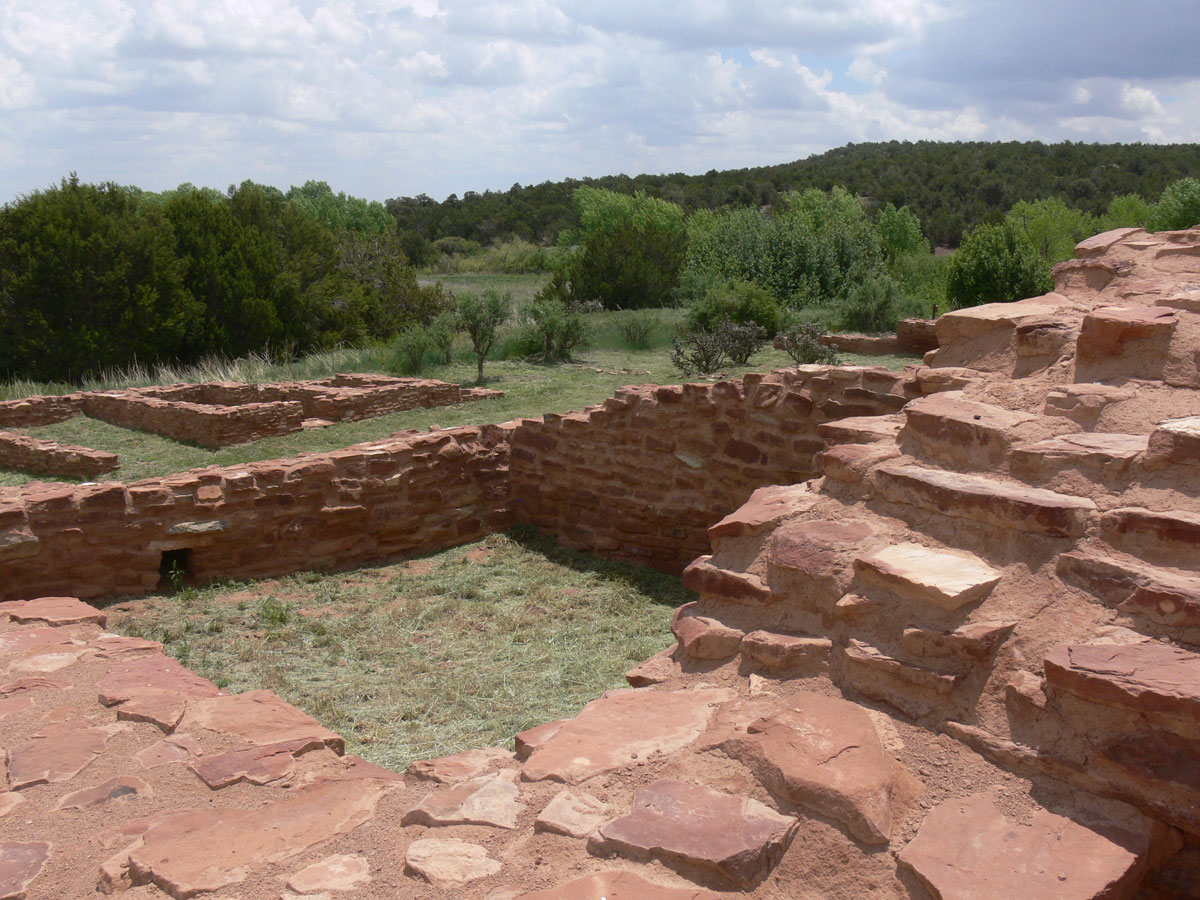
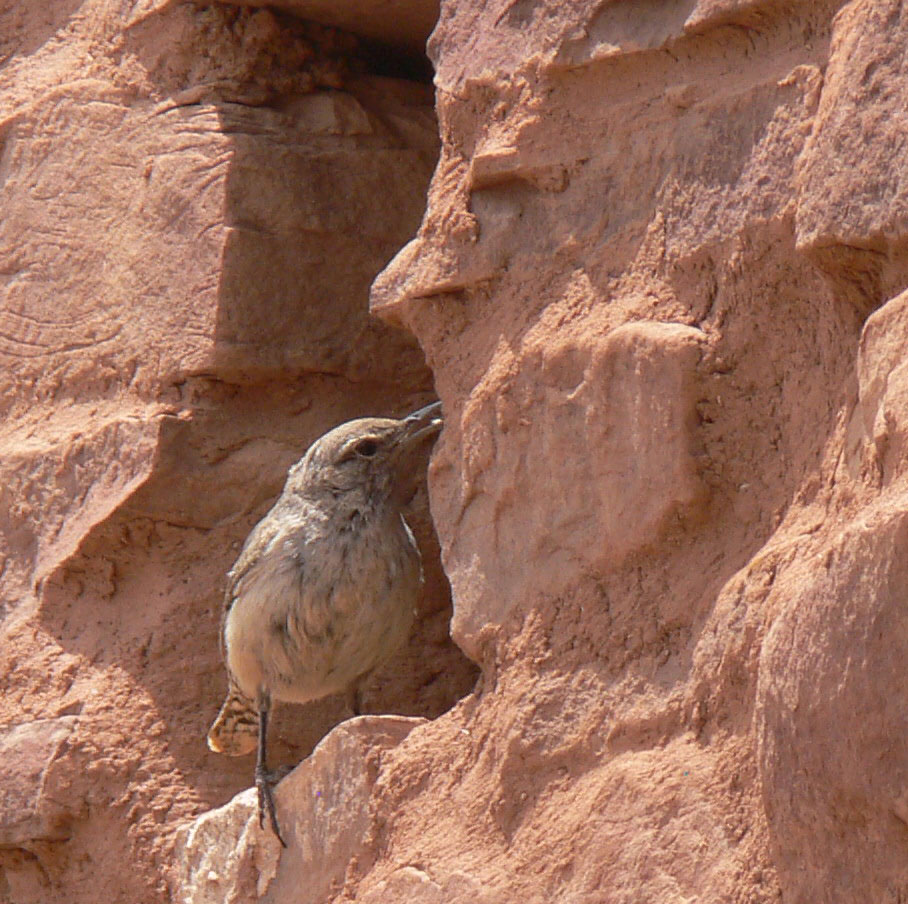
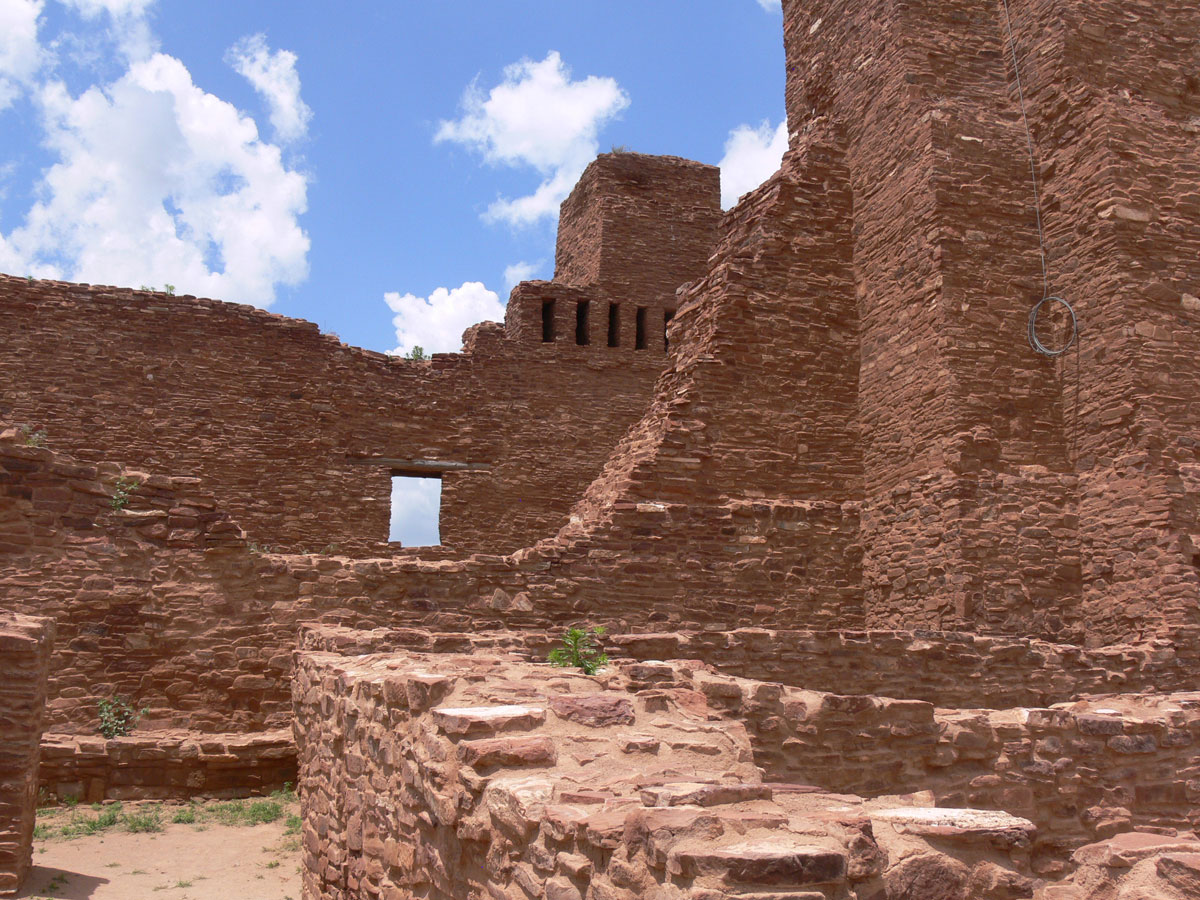
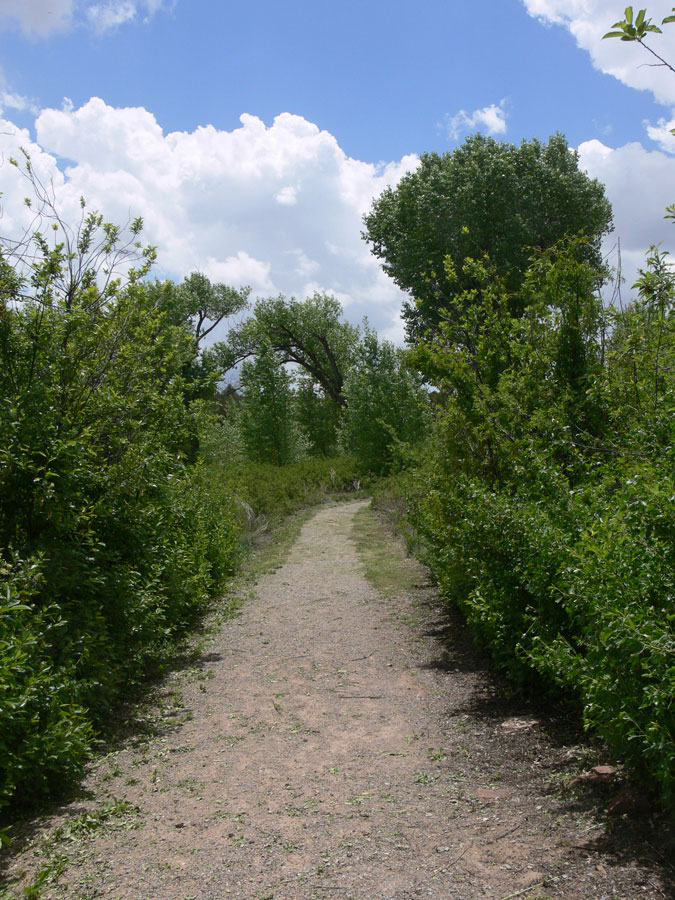
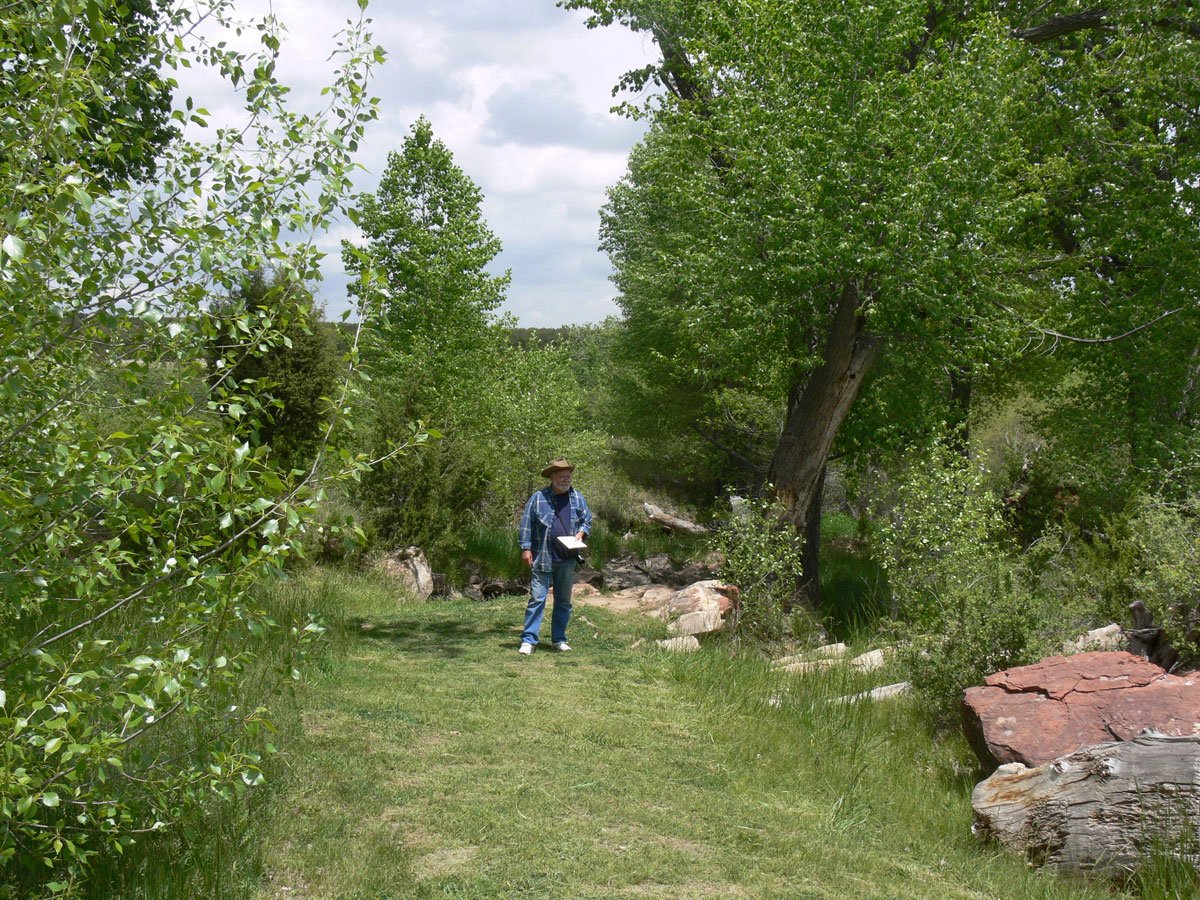
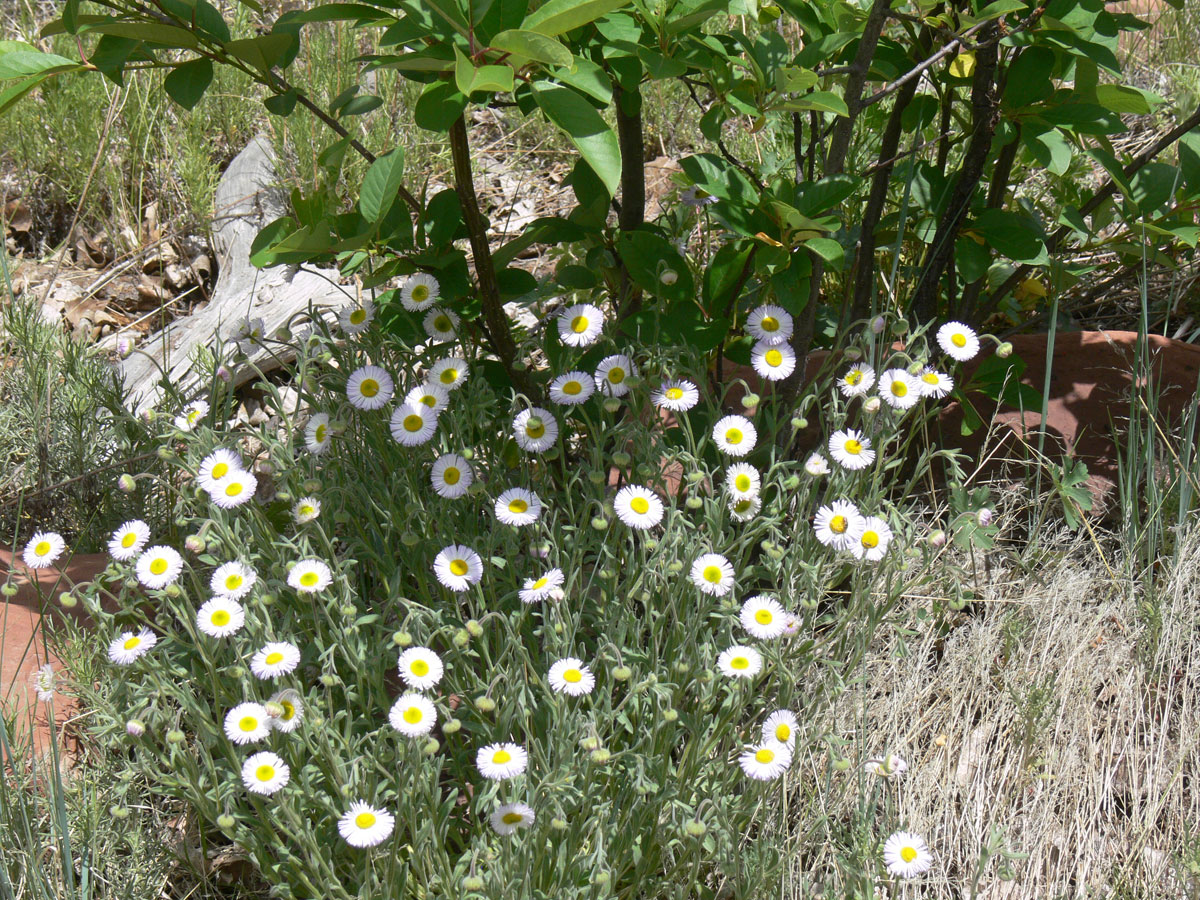
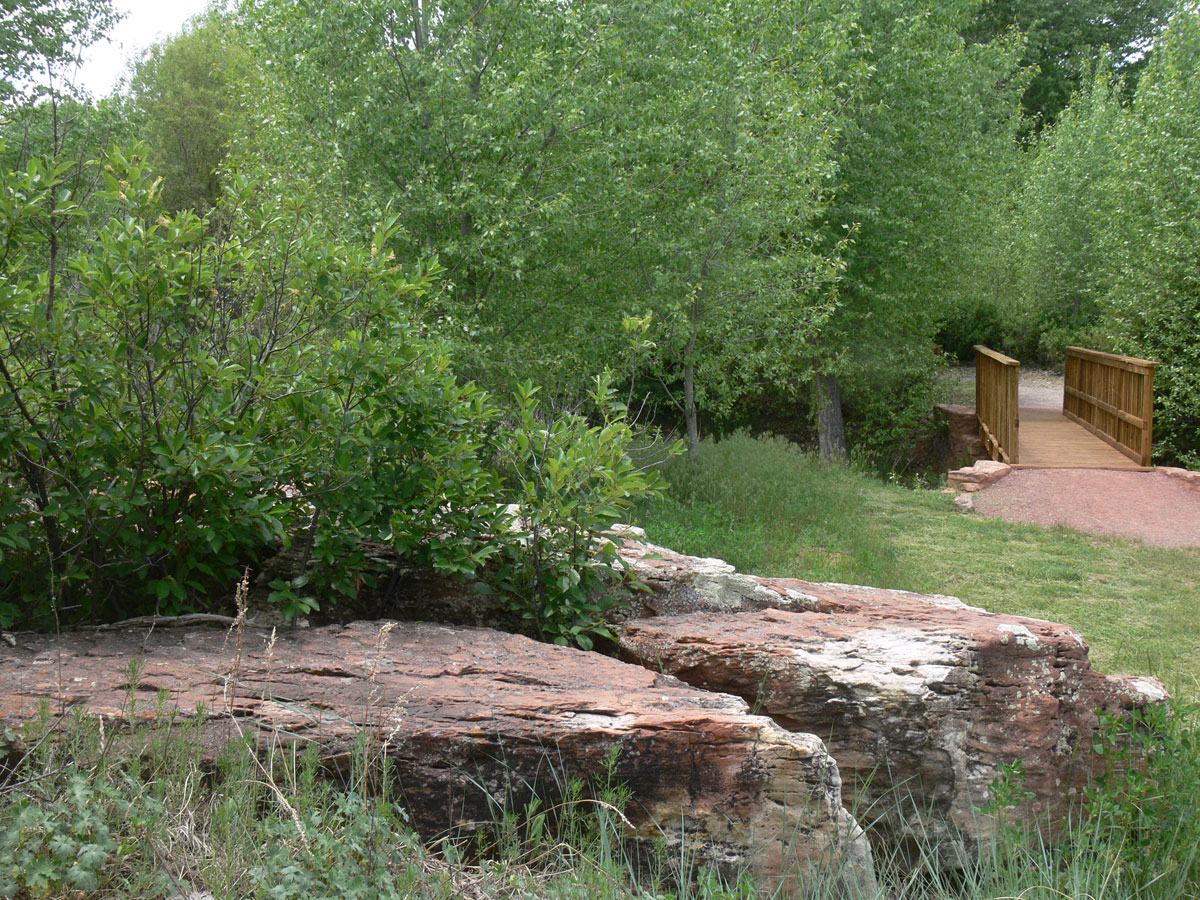
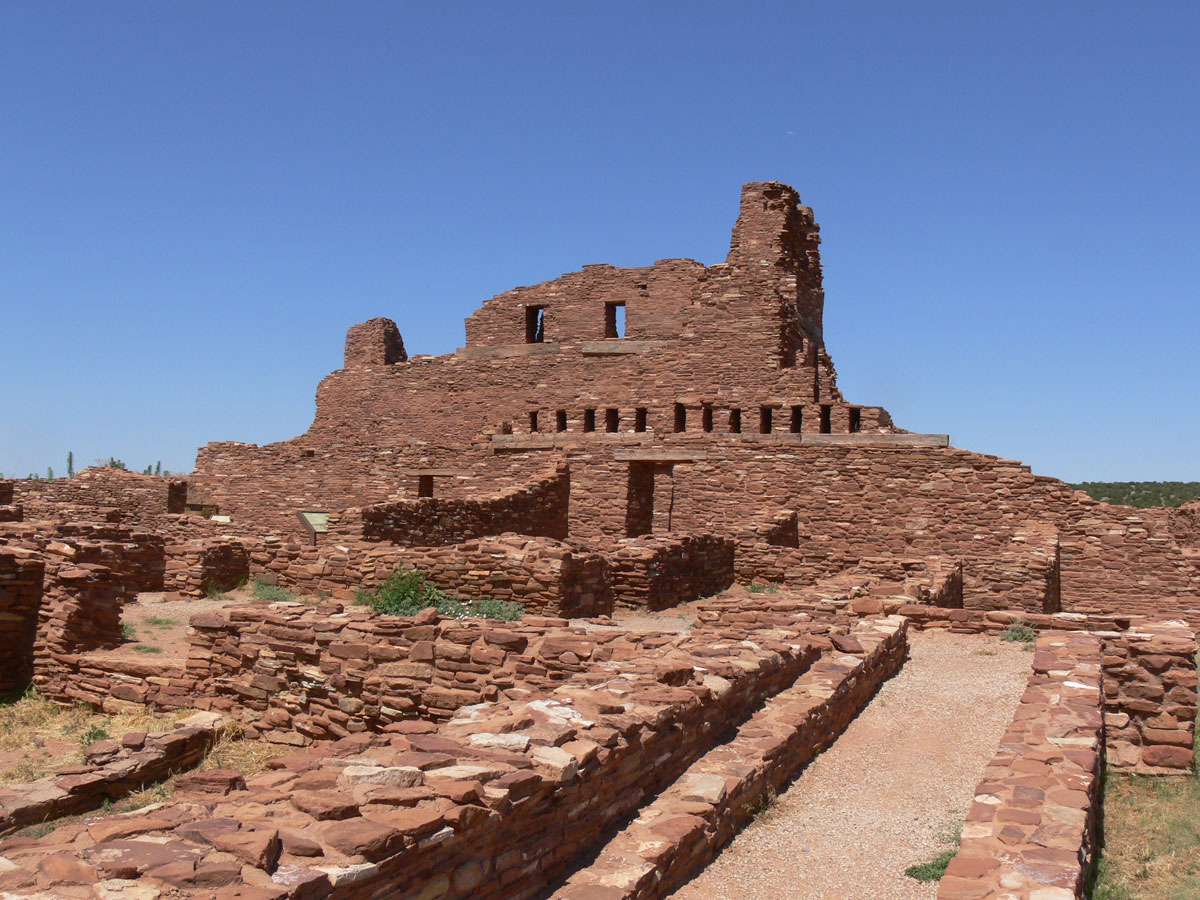
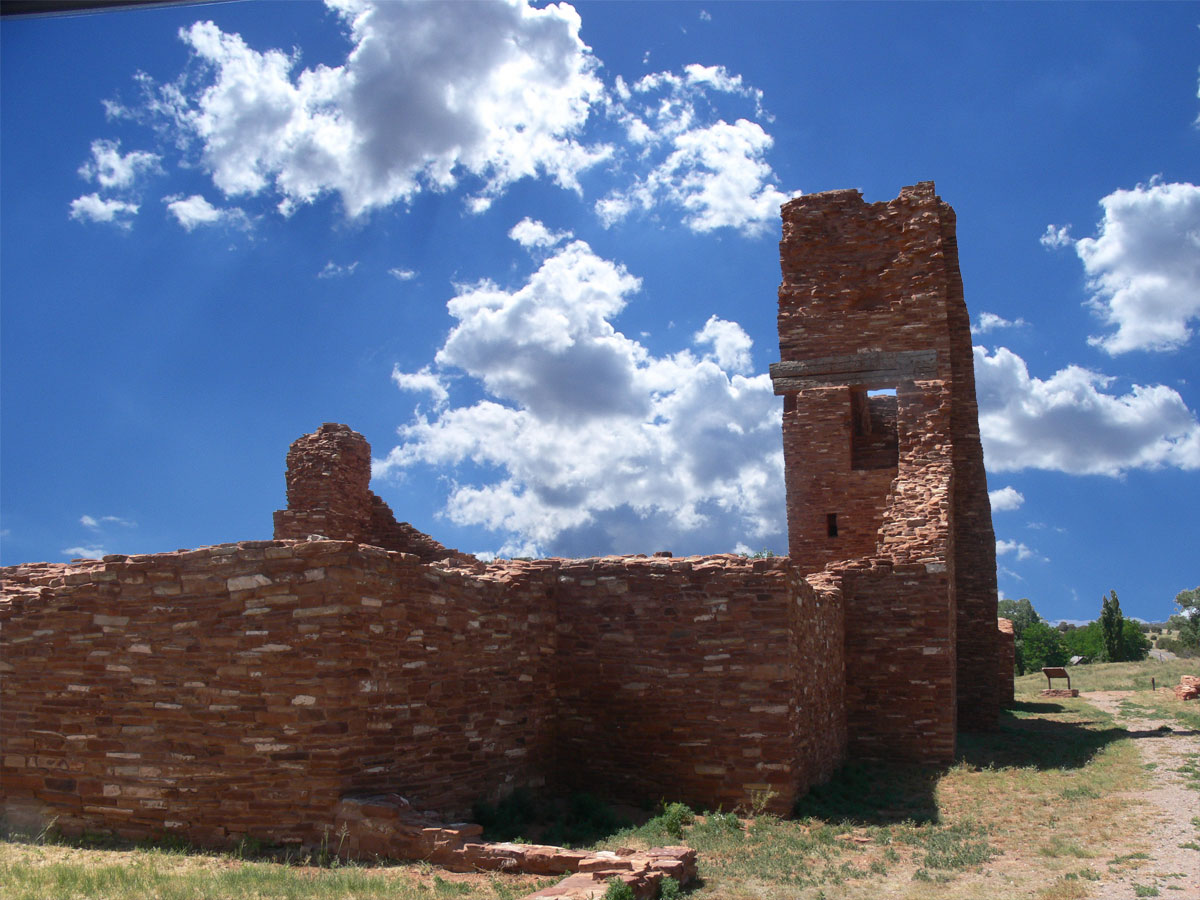
4 comments:
I had no idea there were such complete ruins there. Terrific pictures. Thanks for the tavel adventure.
Such lovely photos, Kate. Thank you. I can't wait to get to New Mexico.
Jeanne
Gorgeous pictures Kate, really spectacular.
Wow, Thank you all for your kind comments. These ruins are really treasures.
Kate
Post a Comment